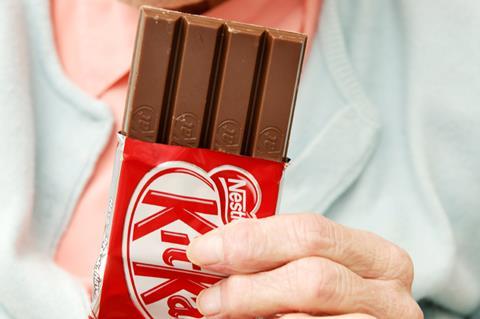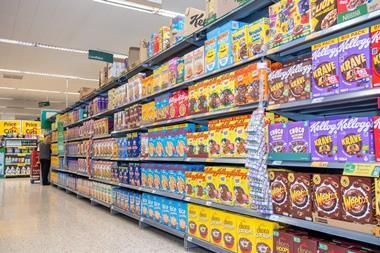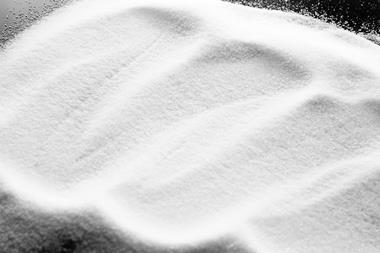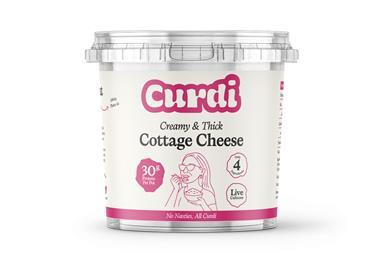
Nestlé this week claimed it had set a “new standard” for transparent reporting after revealing nearly 40% of its sales of everyday food products in the UK are high in salt, sugar or fat (HFSS).
The company behind brands such as Kit Kat, Shreddies and Yorkie this week published a breakdown of its entire global portfolio, which it claimed was a world first, and also gave UK national data for sales based on a government-recognised nutrient profiling model.
The company used the Australian Health Star Rating (HSR) to show that globally close to 60% of its net sales scored 3.5 stars or above in the scheme, which scores between 0.5 and 5 based on nutritional benefits – although this included specialist infant and medical nutrition, without which the figure lowers to just 37%.
The report reveals in the UK, of the 69% of its products within the scope of the nutrient profiling model (NPM), used by the government to classify HFSS products, 39% of net sales were for HFSS and 61% non-HFSS.
Nestlé said it would announce a target to improve its global figures by the end of this year.
The HSR has also been adopted by other companies including Unilever, which published figures from six of its territories in October, showing 24% of its global revenue for 2021 came from products with an HSR above 3.5.
Nestlé’s move comes after investors from the group ShareAction piled pressure on major food companies to publish results including the nutritional value of their products and targets for improvement by the end of this year.
In March, 2021, after being targeted by the group, Tesco CEO Ken Murphy announced a commitment that 65% of total sales would come from products defined as healthy under the NPM.
“We are setting a new standard in corporate transparency,” said a Nestlé spokeswoman. “We are the first company to report on the nutritional value of our entire global portfolio.
“Later this year, we will set a global target for the healthier part of our portfolio.
“The details of this target need careful assessment and we are engaging with relevant stakeholders.”
Holly Gabriel, campaign lead, consumer health, at ShareAction, said the report was a “welcome step forward” but showed how important it was for transparent reporting to be rolled out more widely.
“Based on HSR, just 37% of Nestlé’s entire global portfolio is classified as healthier,” she said.
“This is a significant drop from their 2022 figure of 80.5%, which was based on Nestlé’s own in-house ‘Nestlé Nutritional Foundation profiling criteria’ and included their specialised nutrition category.”
Children’s Food Campaign co-ordinator Barbara Crowther added: “We’re pleased to see companies starting to respond to the increasing demands from investors and health policy makers, and it is useful to see Nestlé’s baseline data.
“We want to see transparent nutritional information being made mandatory, with agreed metrics and reporting processes consistently applied across the food and drink industry, and hope the new Food Data Transparency Partnership will rise to this opportunity.
“With 40% of Nestlé’s food and drink portfolio falling into the category of being HFSS under this model, there is still plenty of further scope for healthy reformulation in several product categories.”



















No comments yet